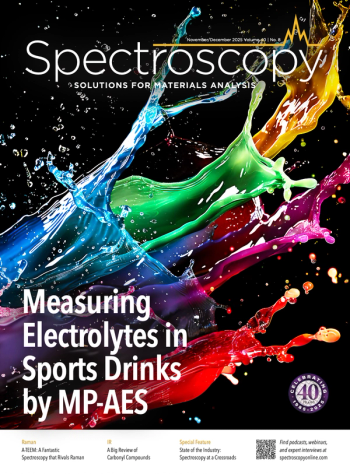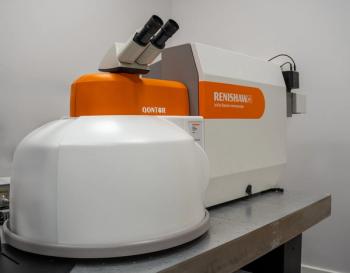
New Spectroscopic Techniques Offer Breakthrough in Analyzing Ancient Chinese Wall Paintings
This new study examines how spectroscopic techniques, such as attenuated total reflection Fourier transform infrared spectroscopy (ATR FT-IR), ultraviolet–visible–near-infrared (UV-Vis-NIR) spectroscopy, and Raman spectroscopy, were used to analyze the pigments in ancient Chinese wall paintings.
Art, especially paintings, is one of the biggest cultural artifacts that previous civilizations have left behind for scientists to study. Because of the pigments used to create these paintings, they are subject to deterioration because of environmental factors and general aging (1,2). Because paintings offer scientists and cultural researchers a snapshot into ancient civilizations, the preservation of these ancient painting is essential.
Ancient Chinese murals, such as those in the Five Northern Provinces’ Assembly Hall, are some of the most well-archived paintings in the world (1). Numerous studies have examined these murals at length, including the preparation and techniques used in creating a stable base for the paint used in the murals (1). Using polarized light microscopy, X-ray fluorescence (XRF), X-ray diffraction (XRD), and other advanced analytical techniques, researchers identified pigments like red ochre, cinnabar, azurite, and lead white, along with imported colors such as Prussian blue and smalt (1).
Recently, a research team from Xi'an Jiaotong University continued their study of ancient Chinese paintings by experimenting with a new non-destructive method to accurately predict the relative contents of mixed mineral pigments in ancient Chinese wall paintings (2). This new study was led by Sok Yee Yeo of Xi'an Jiaotong University, and the findings were published in the journal Applied Spectroscopy (2).
Traditional methods often require physical samples, which can be invasive and potentially damaging. In contrast, the non-invasive approach developed in this study allows researchers to assess these artworks without causing harm (2). The team used colorimetry, ATR FT-IR, UV-Vis-NIR spectroscopy, and Raman spectroscopy. These methods enabled the team to analyze not only color differences and spectral reflection but also the chemical composition and molecular structure of the pigments (2). The initial analyses were conducted on simulated samples designed to mimic ancient pigments, specifically malachite-lazurite mixtures bound with rabbit glue (2). By creating these controlled samples, the team was able to simulate the aging effects on pigments and understand how the spectroscopic readings might shift over time (2).
Once their analysis was complete, the team collected the spectral data and developed predictive models based on it. In their study, they used advanced mathematical methods such as principal component analysis (PCA) and nonlinear curve fitting (2). The models leveraged the Beer-Lambert law, which connects the absorbance of a substance to its concentration, to predict the relative contents of pigments (2). Importantly, PCA and empty modeling methods were integrated with non-negative partial least squares (PLS) analysis, particularly in examining Raman mapping data (2). This statistical approach enabled the team to quantify pigment compositions with a high degree of accuracy.
This study demonstrated the benefits of various spectroscopic techniques. For example, the UV-Vis-NIR spectra allowed for the creation of models that yielded remarkably low error rates for relative malachite content—approximately 2% error of prediction (2). Meanwhile, the ATR FT-IR technique produced results with errors less than 3.6% using the 1041 cm⁻¹/961 cm-1 wavenumber ratio, representing malachite content within the malachite–lazurite samples (2).
The meticulous statistical modeling in this study is particularly noteworthy for those in the field of heritage conservation. The combination of multiple spectroscopic techniques with PCA and other modeling methods illustrates a comprehensive approach to analyzing the complex mixtures in ancient pigments (2). By minimizing prediction errors, these models provide a clearer understanding of the original composition of pigments, which is crucial for both preservation and restoration efforts.
References
- Hu, K.; Bai, C.; Ma, L.; et al. A study on the painting techniques and materials of the murals in the Five Northern Provinces’ Assembly Hall, Ziyang, China. Herit. Sci. 2013, 1, 18. DOI:
10.1186/2050-7445-1-18 - Zou, W.; Yeo, S. Y. Non-Destructive Prediction of the Mixed Mineral Pigment Content of Ancient Chinese Wall Paintings Based on Multiple Spectroscopic Techniques. Appl. Spectrosc. 2024, 78 (7), 702–713. DOI:
10.1177/00037028241248199
Newsletter
Get essential updates on the latest spectroscopy technologies, regulatory standards, and best practices—subscribe today to Spectroscopy.



